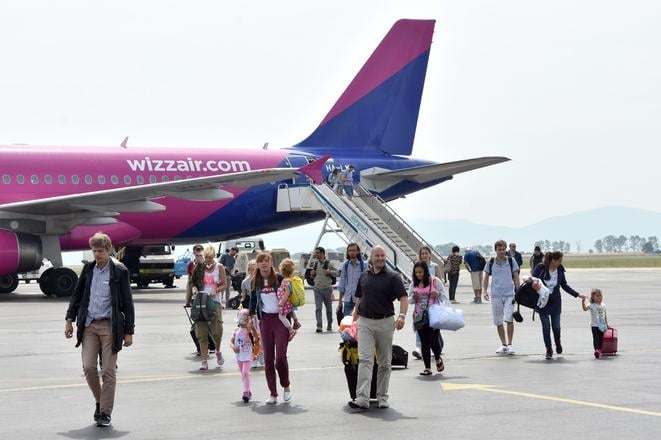Following the announcement of a new route to Bucharest, Romania earlier in July, low-cost carrier Wizz Air has now confirmed it will introduce 12 additional regular routes from Bratislava Airport starting this winter season in November and December, the TASR newswire reports.
The new destinations will include Plovdiv and Varna in Bulgaria; Athens in Greece; Naples, Lamezia Terme, and Palermo in Italy; Niš in Serbia; Alicante, Barcelona, and Málaga in Spain; Oslo in Norway; and Basel in Switzerland – the latter returning to the Bratislava network after a 15-year break.
Flights to Romania, Serbia, Switzerland, and Norway are all new additions. Together with existing regular services to Skopje in North Macedonia and London Luton, the total number of destinations served will rise to 15.

The airline will also open a base at the airport, stationing two 239-seat Airbus A321neo aircraft there. This move is expected to enable the transport of almost one million passengers next year.
“The opening of the Wizz Air base represents a historic milestone for M. R. Štefánik Airport. This is the largest expansion of flights we have agreed with the airline, and it will significantly boost passenger numbers from the current two million to three million annually in the coming years,” said Dušan Novota, General Director of M. R. Štefánik Airport.
Novota added that the expansion will also have a positive effect on employment, as each new aircraft requires around 27 to 30 staff to operate, with further indirect job growth expected in transport, gastronomy, and accommodation services as tourist numbers increase.
“Improving Bratislava’s air connectivity is part of our long-term strategy to expand our network of European destinations and offer low ticket prices,” said Mauro Peneda, CEO of Wizz Air Malta.
In July, the airport reported a notable rise in passenger numbers. By 10 July 2025, it had already handled more than one million travellers – reaching that milestone earlier than in previous years. The figures reflect a strong recovery in demand.


 Wizz Air will operate 15 regular flights from Bratislava. (source: TASR)
Wizz Air will operate 15 regular flights from Bratislava. (source: TASR)